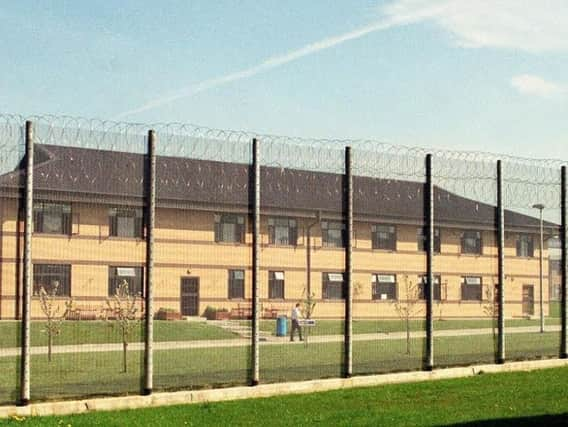Serious prison assault figures skyrocket


Figures released by the Ministry of Justice on Thursday show that attacks at Hindley Prison rocketed from 190 in 2015 to 282 in 2016.
That included a doubling in what are categorised as serious prisoner-on-prisoner assaults, rising from 25 to 53.
Advertisement
Hide AdAdvertisement
Hide AdThe number of attacks by inmates on staff soared from 161 to 239; those recorded as serious rising from two to eight.
Assault figures have fluctuated wildly over the years at Hindley whose purpose and population have changed. It used to be a young offenders’ instutition and is now an adult prison.And there have been years when the number of assaults have been far higher - for instance in 2009 there were 556 and in fact 2015’s tally of 190 had been the lowest since 2005 (149).
However the figure for the number of inmates self-harming - 296 - is by far the largest at Hindley since records began in 2004 (when there were 46 cases.)
The MoJ figures show Hindley following a national pattern with violence across the prisons estate in England and Wales has surging to a new high.
Advertisement
Hide AdAdvertisement
Hide AdThere were 26,643 assaults in the year to March, including a record 7,159 attacks on staff - equivalent to 20 every day.
And 71 convicted criminals or suspects were mistakenly freed in 2016/17 - a rise of seven on the previous year and the highest number since current records started a decade ago.
Fifty-eight of the erroneous releases occurred from prison establishments while 13 were during escort or at courts.
Prisoners released in error are not considered to be unlawfully at large, according to an MoJ report setting out the figures.
Advertisement
Hide AdAdvertisement
Hide AdIt says: “They are not culpable and may be unaware that they have not completed their sentence or have outstanding warrants.
“Depending on the circumstances of the case, they may not be actively pursued for return to custody.”
A prisoner is officially classed as having been released in error if they are wrongly discharged from an establishment or court when they should have remained in custody.
Examples of errors can include misplaced warrants for imprisonment or remand, recall notices not being acted on, sentence miscalculations or discharging the wrong person on escort.
Advertisement
Hide AdAdvertisement
Hide AdThe MoJ said releases in error are extremely rare but it takes cases very seriously, working with police to recapture offenders.
In findings that will prompt fresh scrutiny of the state of jails in England and Wales, it was also revealed that:
::There were 15 escapes from prisons or prisoner escorts in 2016/17;
::Self-harm in jails reached a record high of 40,414 incidents in the 12 months to March 2017, up 5,749 (17 per cent) from the previous year;
Advertisement
Hide AdAdvertisement
Hide Ad::Serious assaults on staff have trebled since 2013, reaching 805 in 2016/17;
::Assaults in female prisons reached 1,023, the highest level for at least nine years;
::The performance of 10 jails was rated as being of “serious concern”.
The findings are the latest in a line of statistics laying bare the scale of the safety crisis behind bars in England and Wales.
Advertisement
Hide AdAdvertisement
Hide AdCampaigners and watchdogs have issued a catalogue of warnings about violence, drug use and overcrowding across the jail estate, which has been hit by a number of disturbances in the last year.
Earlier this month Peter Clarke, the Chief Inspector of Prisons, warned that staffing levels in many establishments are too low to maintain order and described the conditions some inmates are held in as “squalid, dirty and disgraceful”.
Peter Dawson, director of the Prison Reform Trust, said: “These numbers confirm what the Chief Inspector of Prisons has described in graphic detail - that our prison system is nowhere near being safe for those who live and work within it.”
Ministers have launched a recruitment drive to add 2,500 frontline officers, and put in place new measures to tackle the availability of mobile phones and drugs in jails as part of a reform drive.
Advertisement
Hide AdAdvertisement
Hide AdJustice Secretary David Lidington said improving safety and security in prisons was his top priority.
He said: “These figures reinforce how crucial it is that we make progress as quickly as possible. I have seen first-hand the challenges our dedicated and hard-working prison staff face.
“Boosting the frontline is critical to achieving safety and the number of prison officers we are recruiting is rising, with the number of new prison officers joining the service at its highest level since 2010. “